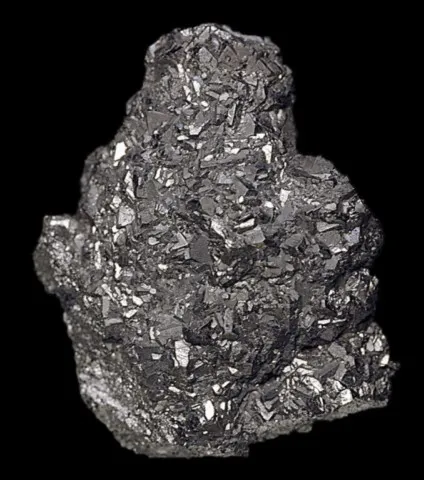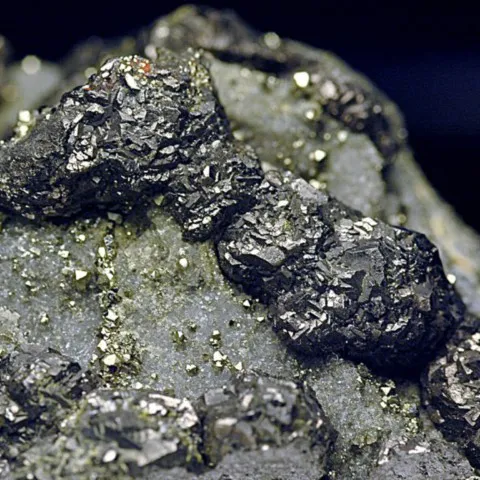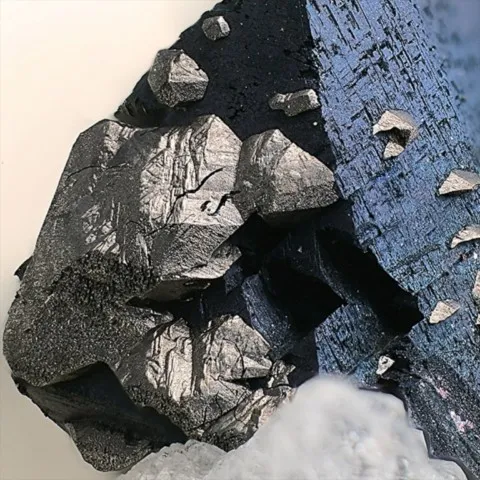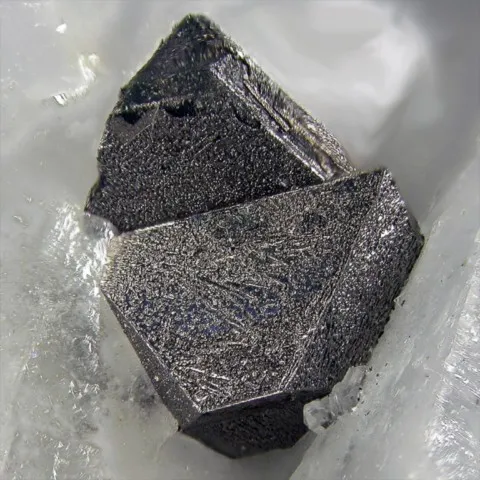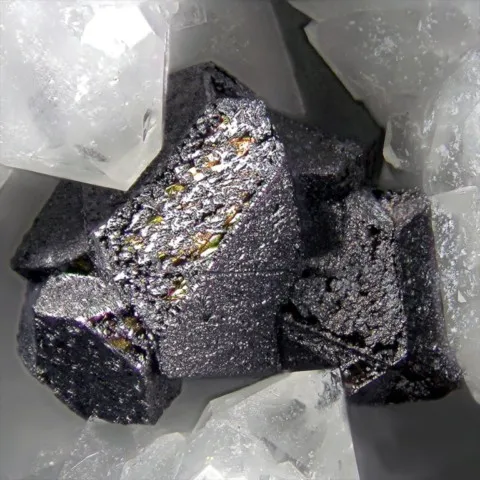FAMATINITE
Class : Sulfides and sulfosalts
Subclass : Sulfides
Crystal system : Tetragonal
Chemistry : Cu3SbS4
Rarity : Rare
Famatinite is a copper and antimony sulfide from hydrothermal copper deposits, where it systematically accompanies pyrite, enargite and tetrahedrite. Its name comes from its locality of discovery : Sierra de Famatina (Argentina). Famatinite is a dark brown, almost black mineral, usually massive and finely grained, constituting reniform aggregates or more rarely coatings of fine, fairly coarse crystals with curved faces. It constantly shows polysynthetic twins.
Main photo : Famatinite from Chinkuashih mine, Ruifang District, New Taipei City, Taiwan © James K. C. Huang
Famatinite in the World
Twinning
Polysynthetic twins are common.
Fakes and treatments
No fake listed for this mineral species.
Hardness : 3 to 4
Density : 4.63
Fracture : Irregular to conchoidal
Streak : Black
TP : Opaque
RI : -
Birefringence : -
Optical character : -
Pleochroism : None
Fluorescence : None
Solubility : -
Magnetism : None
Radioactivity : None

